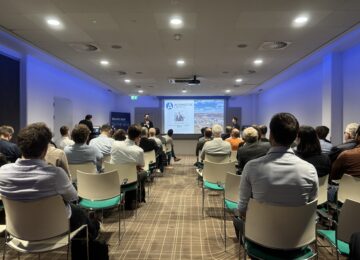ACM approves ATR85
The ACM has recently approved a number of code changes that should stimulate flexible use by large consumers. This should result in less electricity consumption during peak times, creating more space on the electricity grid. With this, the approved code amendments offer an impulse to stimulate flexibility, including energy storage. Specifically, this is envisaged with the introduction of time-based and time-block transmission rights, better known as the ATR85 (previously known as NFA85).
Energy Storage NL has been involved throughout the process and sees the granting of the ATR85 as a first positive step for energy storage financeability. ESNL also previously received a view submitted, incorporating several points into the final code decision.
ATR85: time-based and time-block transportation law
With its decision established that there will be the opportunity for market participants to apply for two new alternative transportation rights: a time-based transportation right and a time-based transportation right. Both transportation rights are detailed below:
- The time-based transmission right (TDTR) entitles the connected party to transmission for a set number of hours per year, with at least 85% of the time the connection can be used. This transport right becomes available on the grids of the national grid operator TenneT, thus setting the number of available hours at 85% of the total annual hours. This means that grid use is cheaper at off-peak times and more expensive at peak times. This gives customers an incentive to use the grid more flexibly and avoid peak hours. This also frees up grid space. The TDTR is the elaboration of TenneT's earlier proposal for a separate grid tariff for flexible grid users such as battery storage, also known as NFA85, which allows for an average tariff discount of 65%.
- The proposed time block-based transmission right (TBTR) entitles the connected party to transmission within time windows agreed upon with the network operator. This transport right is made available on the regional grids.
The difference between transportation rights is that with a TBTR, the connected party knows in advance which hours of the day it will have transportation capacity available. With a TDTR, the connected party knows how many hours of transport capacity it will have available at least, but not exactly which hours. TenneT therefore indicates each day for the following day whether the transmission capacity is available in accordance with the TDTR. This will take place at the latest half an hour before the gate closing time of the FRR auction, or at 08:30 at the latest.
Effective date and regulation duration
The ACM attaches great importance to early implementation and expects a generic implementation by no later than October 1, 2025 feasible. As of that date, TenneT is obliged to offer the TDTR to connected parties. The ACM also offers TenneT the option of offering the TDTR as early as April 1, 2025. As in the original proposal of the joint grid operators, the ACM sets the date for making the TDTR available to connected parties at April 1, 2025. In doing so, the ACM is responding to ESNL's call for an earlier entry into force date, as the grid operators had previously been pushing for an implementation date of April 1, 2026. According to ESNL, this accelerated entry into force is important to provide the desired clarity to market parties and financiers.
In the explanatory notes to the proposal, the network operators have undertaken not to initiate any adjustments to the regulation for TDTRs for 15 years from the time the current code change takes effect. By doing so, the grid operators aim to offer certainty to (future) connected parties for whom entering into a TDTR involves a large investment. The ACM endorses this importance of investment security. However, the desirability of continuing or possibly changing the TDTR is examined every five years.
Starting points for future rate adjustments
The ACM expects further measures to be needed in the coming years to encourage flexible use of the power grid. Therefore, the ACM has principles established for future adjustments to tariff structures. An example of this type of new tariff structure is the introduction of a feed-in tariff. The ACM is currently investigating this. Another example is tariff differentiation for small consumers which the grid operators are currently investigating.
The ACM indicates that tariff differentiation for types of users is only possible if it complies with the European principles of cost reflectivity, promoting system efficiency, transparency and non-discrimination. In addition, the regulator indicates that if there is a social desire to treat certain sectors or types of users differently, this must be arranged outside the tariff structure, for example in the form of subsidies.
Since the ACM expects that more changes are necessary to encourage flexible grid use through grid tariffs, the regulator has also established a set of principles that the ACM will use in future adjustments to the tariff structure.





